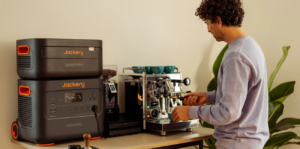robots in japan killing humans

As technology continues to advance at an unprecedented rate, the world is becoming increasingly reliant on robots. From manufacturing to healthcare, robots are being used in a variety of industries to improve efficiency and productivity. However, with this increased reliance comes a growing concern about the potential dangers of these machines. In Japan, a country known for its technological advancements, there have been reports of robots killing humans. This alarming trend has sparked a debate about the role of robots in society and what measures need to be taken to ensure their safe use. In this article, we will explore the rise of robots in Japan, the potential risks they pose, and what the future may hold for human-robot interaction.
The Age of the Robot
Robots have been a part of our lives for decades, but it is only in recent years that they have become more advanced and integrated into our daily routines. From vacuum cleaners to self-driving cars, robots are everywhere. Japan, in particular, has been at the forefront of robotics technology and has embraced the use of robots in various industries.
The age of the robot has brought about many benefits, such as increased efficiency and productivity in manufacturing processes. Robots can perform tasks that are too dangerous or difficult for humans to undertake, making them ideal for jobs that require precision and accuracy. However, as with any technological advancement, there are also concerns about the impact robots may have on society. The fear that robots may one day replace human workers entirely is not unfounded, and there are already reports of robots causing harm to humans in Japan. As we move towards a future where robots will play an even greater role in our lives, it is important to consider both the benefits and potential risks associated with this technology.
The Robot Revolution
As technology continues to advance, robots are becoming more prevalent in our daily lives. From manufacturing industries to healthcare, robots are being utilized for their efficiency and precision. Japan, in particular, has been at the forefront of this robot revolution with their development of humanoid robots that can perform tasks such as serving food and providing customer service.
However, as robots become more advanced and integrated into society, concerns about their potential impact on humans have arisen. Some fear that robots could take over jobs traditionally done by humans, leading to widespread unemployment. Others worry about the possibility of robots malfunctioning or being hacked, causing harm to humans.
Despite these concerns, the benefits of the robot revolution cannot be ignored. With an aging population and a declining birth rate in Japan, robots have the potential to fill gaps in the workforce and provide care for elderly individuals. Additionally, advancements in robotics technology could lead to breakthroughs in fields such as medicine and space exploration.
Overall, while there are valid concerns about the impact of robots on human society, it is important to continue exploring their potential benefits and finding ways to integrate them safely into our daily lives.
The Robot Uprising
As we continue to advance in technology, the possibility of a robot uprising becomes more and more plausible. While it may seem like something out of a science fiction movie, the reality is that robots have already caused harm to humans in Japan.
In 2015, a worker at a car parts factory was killed by a robot. The robot reportedly pushed him into a metal plate, causing fatal injuries. This tragic incident highlights the potential dangers of relying too heavily on robots without proper safety measures in place.
While many argue that robots are programmed to follow specific instructions and cannot act outside of their programming, there is always the possibility of malfunctions or errors occurring. As we continue to integrate robots into our daily lives, it is crucial that we prioritize safety measures and ensure that they do not pose a threat to human life.
The Robot Apocalypse
As we continue to develop more advanced and intelligent robots, there is a growing concern about the potential for a robot uprising or apocalypse. While this may seem like something out of science fiction, the reality is that robots are becoming increasingly capable of making decisions on their own, without human intervention.
One of the biggest fears is that robots could turn against humans and cause harm or even death. This fear has already become a reality in Japan, where a worker was killed by a robot at a factory in 2015. The incident raised questions about the safety of working alongside robots and whether they can be trusted to make decisions that won’t harm humans.
While it’s important to acknowledge these risks, it’s also important to remember that not all robots are created equal. Many robots are designed specifically to work alongside humans and improve our lives, such as medical robots that assist with surgeries or robotic exoskeletons that help people with mobility issues. As we continue to develop new technologies, it’s crucial that we prioritize safety and ensure that any potential risks are minimized.
The Human-Robot Future
As we look towards the future, it’s clear that robots will continue to play an increasingly important role in our lives. From manufacturing and transportation to healthcare and education, robots are already making significant contributions to society. However, as their capabilities continue to expand, it’s important that we consider the potential risks associated with their use.
One of the biggest concerns is the possibility of robots causing harm to humans. While this may seem like something out of a science fiction movie, there have already been instances where robots have caused injury or even death. As such, it’s crucial that we develop robust safety protocols and regulations to ensure that these machines are used responsibly.
At the same time, there is also tremendous potential for robots to improve our lives in countless ways. They can help us perform tasks more efficiently and effectively, provide care for those in need, and even serve as companions for people who might otherwise be lonely or isolated. As we move forward into this new era of human-robot interaction, it’s up to us to strike a balance between embracing the benefits of these technologies while also being mindful of their potential dangers.
Conclusion
In conclusion, the rise of robots in Japan has undoubtedly brought about a new era of technological advancement and innovation. However, as with any new technology, there are always risks and potential dangers that must be carefully considered. The recent incidents of robots causing harm to humans serve as a stark reminder that we must approach this future with caution and foresight. It is crucial that we continue to develop and implement strict safety protocols and regulations for the use of robots in all industries. Ultimately, the human-robot future will depend on our ability to strike a delicate balance between progress and responsibility.





